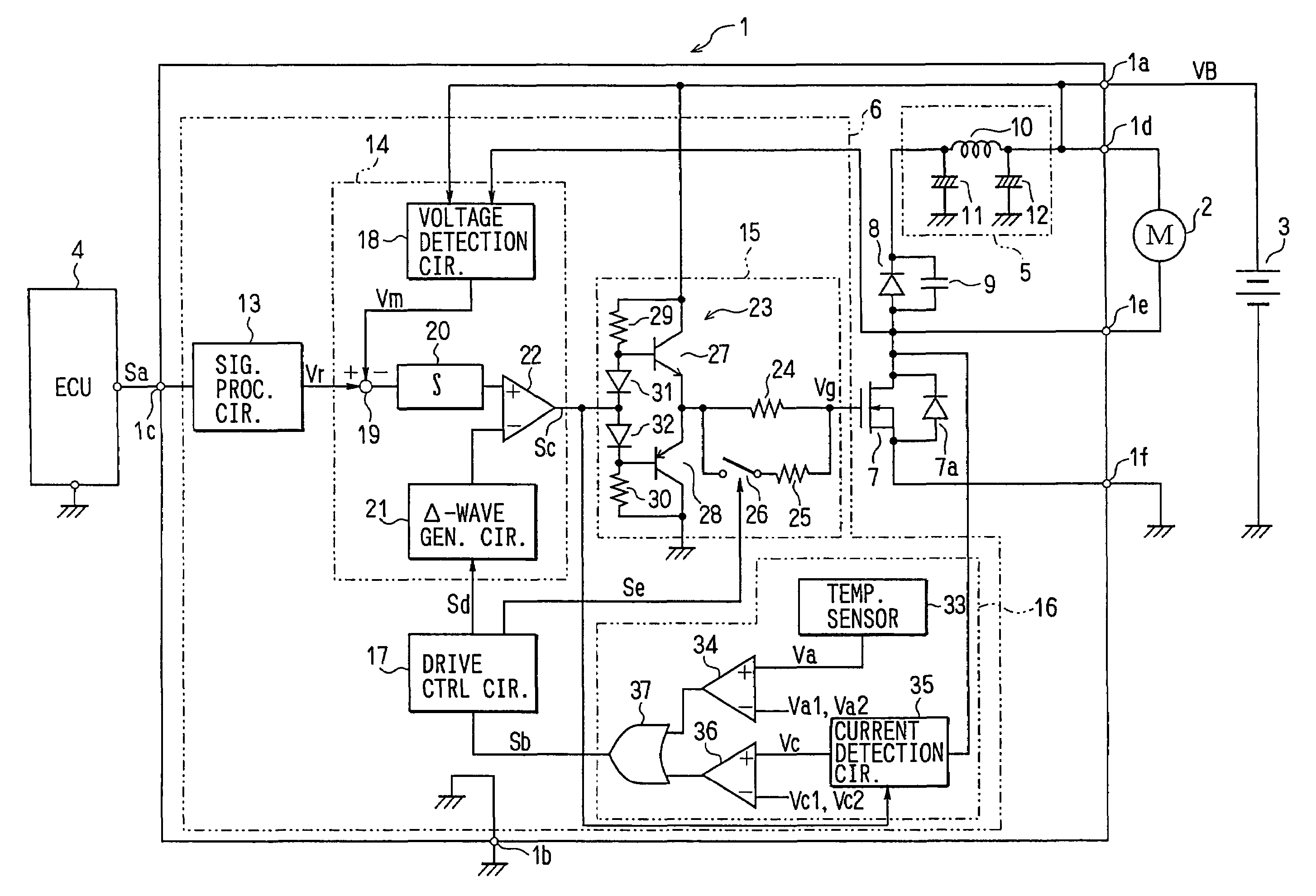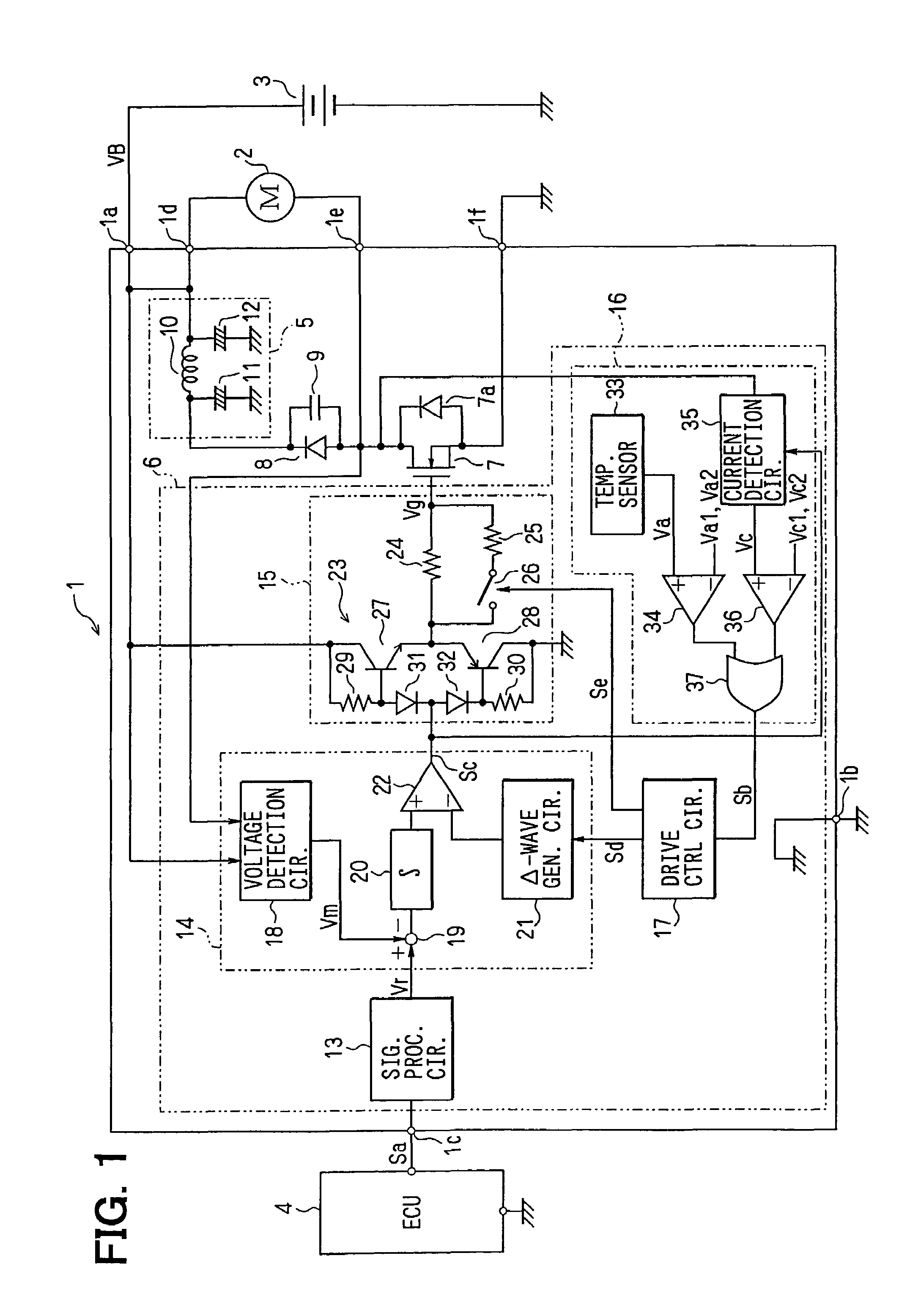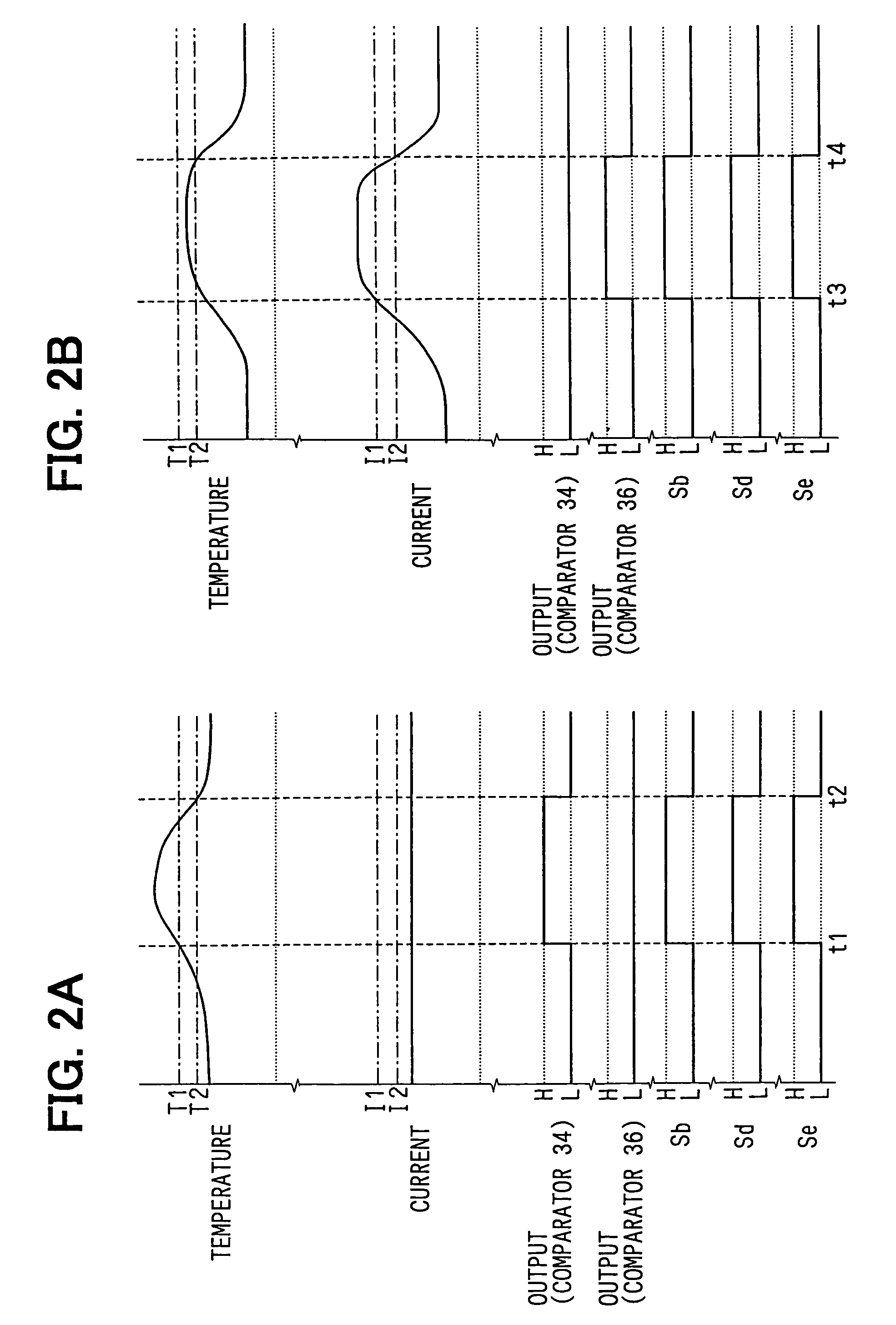Motor driving device
- Summary
- Abstract
- Description
- Claims
- Application Information
AI Technical Summary
Benefits of technology
Problems solved by technology
Method used
Image
Examples
first embodiment
[First Embodiment]
[0026]A first embodiment according to the present invention will be described hereunder with reference to FIGS. 1 to 3.
[0027]FIG. 1 shows the electrical construction of a motor driving device. A motor driving device 1 drives an air blowing fan motor 2 (hereinafter referred to as “motor 2”) for a heat exchanger in a cooling system for a vehicle, and it operates with a battery voltage supplied as a power supply voltage VB from a battery 3 to terminals 1a, 1b thereof. An instruction-signal Sa is supplied from an engine ECU 4 (Electronic Control Unit) to a terminal 1c. This instruction signal Sa is the digital data corresponding to a voltage to be applied to the motor 2 or an analog voltage signal.
[0028]ECU 4 concentrically carries out plural control operations relevant to an engine such as fuel injection control, ignition timing control, idle rotational speed control, etc. As not shown, ECU 4 is supplied with a temperature signal of engine cooling water, an ON / OFF sig...
second embodiment
(Second Embodiment)
[0067]Next, a second embodiment according to the present invention will be described with reference to the circuit diagram of FIG. 4. In FIG. 4, the same constituent elements as FIG. 1 are represented by the same reference numerals. A motor driving device 38 shown in FIG. 4 is different from the motor driving device 1 shown in FIG. 1 in that the construction of the overheat detecting circuit 39.
[0068]The overheat detecting circuit 39 is equipped with a power supply voltage detecting circuit 40 (corresponding to the power supply voltage detecting unit) for dividing the power supply voltage VB input to the terminal 1a and then detecting the voltage thus divided. The voltage Vb corresponding to the power supply voltage VB is input to the non-inverting input terminal of the comparator 36, and threshold voltages Vb1, Vb2 are input to the inverting input terminal of the comparator 36. The threshold voltages Vb1, Vb2 correspond to the power supply voltages VB1, VB2 (VB1>...
third embodiment
(Third Embodiment)
[0071]FIG. 5 shows the electrical construction of the motor driving device according to a third embodiment of the present invention. The same constituent elements as FIG. 1 are represented by the same reference numerals. The motor driving device 41 shown in FIG. 5 is different from the motor driving device 1 shown in FIG. 1 in the construction of an overheat detecting circuit 42. That is, the overheat detecting circuit 42 is equipped with a duty ratio detecting circuit 43 for detecting the duty ratio of the PWM signal Sc. The voltage Vd corresponding to the duty ratio is input to the non-inverting input terminal of the comparator 36, and threshold voltages Vd1, Vd2 are input to the inverting input terminal of the comparator 36. The threshold voltages Vd1, Vd2 correspond to the duty ratios D1, D2 (D1>D2). The motor driving device 41 may be equipped with a current detecting circuit for detecting current flowing in the MOS transistor 7 for over-current protection.
[007...
PUM
 Login to View More
Login to View More Abstract
Description
Claims
Application Information
 Login to View More
Login to View More - R&D
- Intellectual Property
- Life Sciences
- Materials
- Tech Scout
- Unparalleled Data Quality
- Higher Quality Content
- 60% Fewer Hallucinations
Browse by: Latest US Patents, China's latest patents, Technical Efficacy Thesaurus, Application Domain, Technology Topic, Popular Technical Reports.
© 2025 PatSnap. All rights reserved.Legal|Privacy policy|Modern Slavery Act Transparency Statement|Sitemap|About US| Contact US: help@patsnap.com



